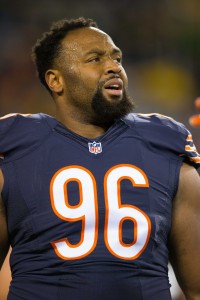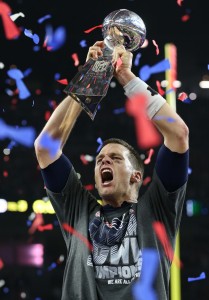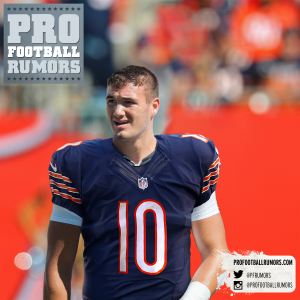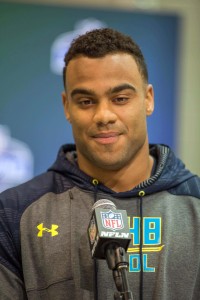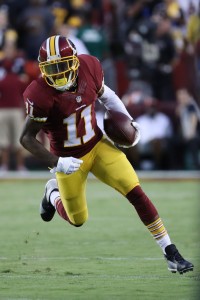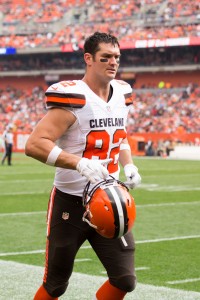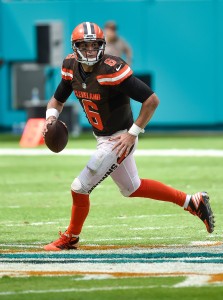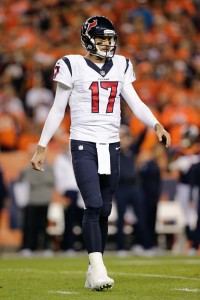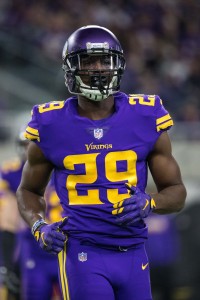Two years ago, at the age of 32, DeAngelo Williams started 10 games for the Steelers and produced 11 rushing touchdowns, 4.5 yards per carry, and 40 receptions through the air while filling in for Le’Veon Bell, who had been suspended and subsequently injured. In 2016, sidelined for seven games by his own health questions, Williams managed only 3.5 yards per touch on 98 attempts.
Thus far, Williams hasn’t been linked directly linked to any clubs, but he made clear earlier today that he intends to play during the 2017 campaign. It’s possible that he’ll have to wait for an injury to occur before receiving a call, something to which Williams alluded to today. I recently ranked Williams as the third-best free agent back available, behind fellow veterans Chris Johnson and Rashad Jennings.
Williams said today there are four teams he won’t play for, but wouldn’t identify those clubs, according to Jeremy Fowler of ESPN.com. With the hope that we’re not listing one of those squads, let’s take a look at six teams that could use Williams immediately:
Detroit Lions
Detroit’s 2016 rushing offense was, by almost any measure, putrid. On an NFL-low 350 rushing attempts, the Lions finished 27th in yards per carry, 25th in DVOA, and 31st in adjusted line yards, the latter a measure of a club’s offensive line strength. Detroit attempted to rectify its front five this offseason, swapping out Larry Warford and Riley Reiff for T.J. Lang and Ricky Wagner, but the team’s crop of backs has essentially remained stagnant. Getting former second-round pick Ameer Abdullah back from a Lisfranc injury should help matters, and the Lions have praised reserve Dwayne Washington, but the club’s only free agent addition or draft choice in the backfield was former Viking Matt Asiata, who plodded to a 3.3 yards per carry average a season ago. Williams, then, could offer Detroit a bit more dynamic safety net behind its younger runners.
Los Angeles Chargers
Among the 19 running backs that managed at least 200 carries in 2016, Melvin Gordon finished 13th with only 3.93 yards per rush. So although he scored 10 touchdowns on the ground, it stands to reason the former first-round pick could use a breather from time to time. Kenneth Farrow, who served as Gordon’s primary backup last season, posted only 3.2 yards per carry on 60 attempts, while Branden Oliver (who hasn’t seen the field since October 2015), Andre Williams, and Kenjon Barner aren’t exactly an inspiring crop. With Danny Woodhead having left via free agency, the Chargers have a need for a back like Williams, who can succeed in the passing game.
Los Angeles Rams
Like Gordon, Todd Gurley struggled from a lack of team running back depth, as he finished 19th out of 19 on the list linked above with just 3.18 yards per attempt. The Rams offense was a disaster as a whole, ranking 32nd in both pass and rushing DVOA. Los Angeles has seemingly found a fix at left tackle, upgrading from Greg Robinson to Andrew Whitworth, and are now 18th in Pro Football Focus‘ offseason offensive line rankings. Still, when the “running back” with the most carries behind Gurley is Tavon Austin with 28, backups are an issue. The Rams already signed former Cowboy Lance Dunbar to handle third-down work, but Williams would offer a more prototypical skill-set as a reserve.
Miami Dolphins
Jay Ajayi was excellent during his second NFL season, rushing for more than 1,200 yards while ranking seventh in DYAR and finishing third in PFF’s running back grades. But there are certainly reasons to be concerned about Ajayi, and chief among them is the knee issues that led to his draft slide in 2015. Severe knee injuries scared off teams that year, and Ajayi has put a lot of work in during the past four seasons. Between Boise State and Miami, Ajayi has managed 249 carries in three of the past four seasons (including a whopping 347 attempts during his final collegiate campaign). Personally, I’m a fan of backup of Damien Williams, but his lack of production during his three-year NFL tenure may leave the Dolphins looking for an experienced reserve such as DeAngelo Williams.
New York Giants
The Giants regard second-year runner Paul Perkins as a three-down back, but they haven’t added much insurance in the event Perkins doesn’t perform (or gets injured) in 2016. Shaun Draughn and Orleans Darkwa haven’t done much in their limited NFL action, Shane Vereen has proven himself to be a passing game specialist, while fourth-round rookie Wayne Gallman was labeled an impatient runner and compared to journeyman Khiry Robinson in Lance Zierlein’s NFL.com predraft profile. Big Blue’s rushing attack ranked 26th in DVOA a season ago, and doesn’t figure to improve if Perkins doesn’t grow into a No. 1 role. Still, the Giants are the least likely club on this list to bring in Williams or any other veteran.
Pittsburgh Steelers
Williams was an excellent investment for the Steelers, as he provided stability in the club’s backfield (especially in 2015) while earning only $4MM over the life of a two-year contract. He could conceivably play a similar role for Pittsburgh in 2017, but the Steelers have added other factors behind Le’Veon Bell. In addition to signing free agent Knile Davis, Pittsburgh also spent a third-round choice on local product James Conner. Fitzgerald Toussaint is also in the discussion for backup carries after posting 4.1 yards per attempt in 58 touches last year. General manager Kevin Colbert said in March the Steelers weren’t yet closing the door on Williams, but that statement was made before Pittsburgh draft Conner. Williams himself said today he wasn’t ruling out a return to the Steelers.
